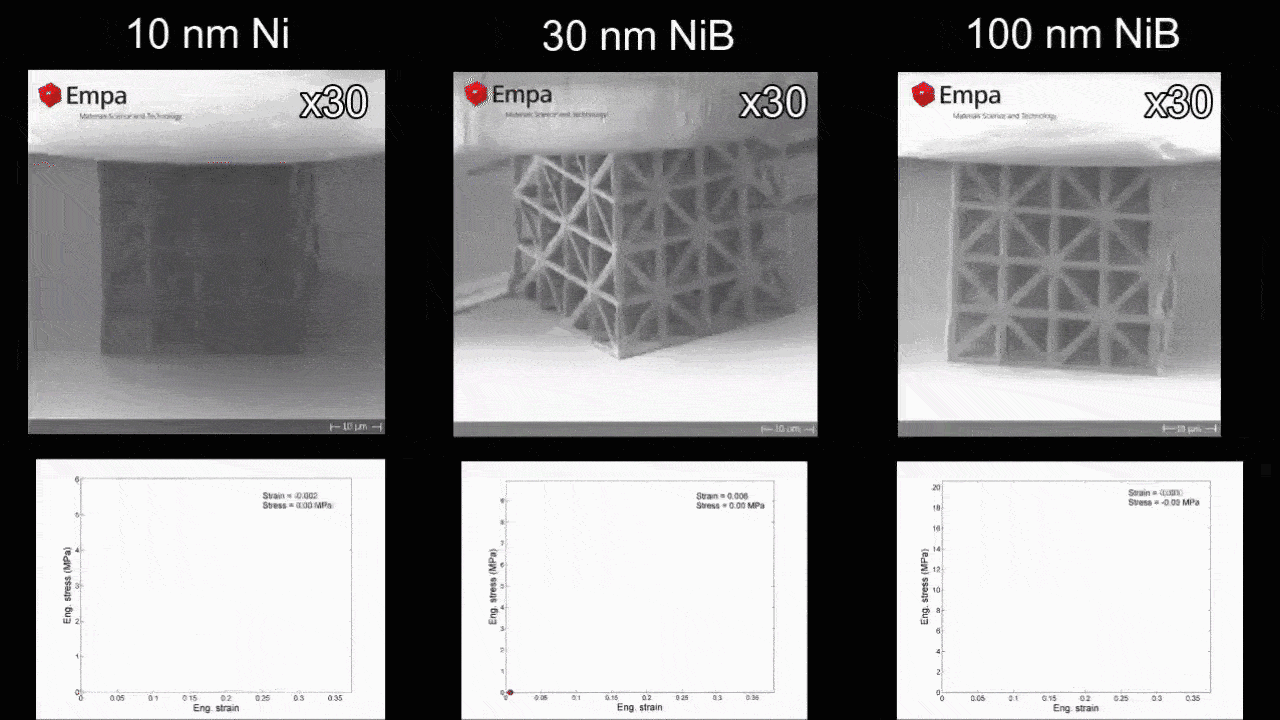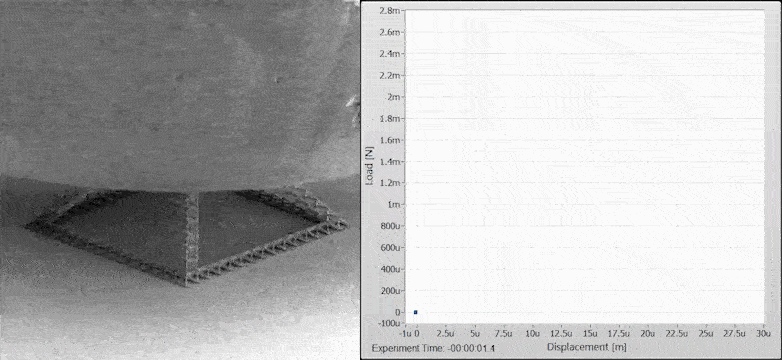ADDITIVE MANUFACTURING
The emergence of additive manufacturing or 3D printing technologies has allowed the fabrication of highly complex three-dimensional geometries down to the nanometer scale in a voxel-by-voxel fashion. Applications range across all fields and length scales, from printed devices, biomaterials and tools to rapid prototypes and metamaterials. However, there are still several challenges to the commonplace use of additive manufactured components, namely the suitability of materials, quality consistency, dimensional tolerance and scalability limitations, to name but a few.
For many years, the development of new materials has relied on the modification of the composition, such as alloying of metals or blending of polymers, to achieve a particular set of properties. This approach, although successful, can be time consuming, often empirical and results in only incremental improvement in properties. Additive manufacturing provides a very different approach: instead of finding a material that will suit a specific application, the material can now be designed for a specific usage in order to take advantage of its unique cellular structure and mechanical size effects. Some remarkable features of architecture cellular materials include high stiffness-to-weight ratios, negative Poisson’s ratio (auxetic materials), low or negative coefficient of thermal expansion, superior electrical conductivity, heat transfer and energy absorption. In many cases, such structures exhibit high strength and yet very low density by combining well-engineered cellular solids with size effects at the nanometer scale, resulting in structures with outstanding properties.

Tilted and top view SEM images of microcellular architectures after NiB metallization. The scale bar in all images is 10 µm (from Ref. 2)
A promising route for manufacture of cellular structures consists of building a 3D polymeric template after which a ceramic or metallic coating can be deposited by atomic layer deposition (ALD) or electroless plating, for example. This produces metal/polymer or ceramic/polymer hybrid structures with superior energy absorption capabilities and optimized deformation mechanisms.
The Alemnis Standard Assembly (ASA) is ideally suited to the characterization of hybrid structure mechanical properties by uniaxial microcompression owing to its highly accurate displacement control and large displacement range (typically 40 µm, but available up to 100 µm).

Examples of crush tests on polymer cellular structures reinforced with Ni and NiB coatings (Courtesy of EMPA, Thun, Switzerland)
The ASA has been used for a number of studies on various types of hybrid structures and it has become apparent that the combination of low load resolution and displacement control make it one of the only instrumented indentation techniques capable of capturing the true deformation response of the 3D structure. This is because most conventional indentation systems are load controlled, so when a fragile structure, such as a 3D hybrid structure, is deformed it will start to crush at a certain load and the force-feedback control will attempt to maintain the applied load, therefore immediately crushing the structure, without acquiring much useful data. Even if the load-controlled system is used in open loop mode, the load drops cannot be accurately recorded because of other system limitations (electronics, data acquisition rate, etc.). Direct comparison tests between the ASA and conventional nanoindenters has shown that only the ASA can accurately record the true load drops associated with sudden deformation excursions, as demonstrated by the videos in this section.
Typical test conditions for uniaxial microcompression are displacement rates of 20-100 nm s-1 (depending on the 3D structural size) and a diamond flat punch indenter of diameter slightly larger than the structure being tested. The load-depth curves are corrected for thermal drift and instrument compliance, after which engineering stress and strain can be calculated from them using the cross-sectional footprint area and the height of the structure.


Crush tests on a Al2O3-coated polymer 3D structure produced by additive manufacturing (courtesy of Prof. Lucas Meza, University of Washington, USA)
The large displacement range and closed-loop displacement control of the ASA makes it ideally suited to the characterization of the mechanical properties of micron scale springs and similar structures. An example is shown here of an additive-manufactured nanocrystalline nickel (ncNi) microprings (with 10 µm diameter and 20 µm height) which have been tested in compression with both constant cyclic displacement (to study fatigue) and progressive cyclic displacement (to study plastic deformation). Single cycle (monotonic) displacement can also be applied with the ASA to determine the compliance (or spring constant) of the structure.

Compression test on ncNi microspring with constant cyclic displacement over the range 7 – 29 µm (Courtesy of R. Ramachandramoorthy, EMPA)
Such microsprings are designed and produced by a combination of electrodeposition and two-photon lithography, which produces very high quality metallic structures that do not require any post processing. Almost any type of structure can be produced, including microsprings, microcoils, microneedles, microlattices, etc.


Compression test on ncNi microsprings with progressive cyclic displacement up to 4 µm (Courtesy of R. Ramachandramoorthy, EMPA)
Selected References
- H. L. Ferrand, F. Bouville, A. R. Studart, Processing of dense bio-inspired ceramics with deliberate microtexture, arXiv preprint arXiv:1807.04378 (2018). https://doi.org/10.48550/arXiv.1807.04378.
- M. Mieszala, M. Hasegawa, G. Guillonneau, J. Bauer, R. Raghavan, C. Frantz, O. Kraft, S. Mischler, J. Michler, L. Philippe, Micromechanics of Amorphous Metal/Polymer Hybrid Structures with 3D Cellular Architectures: Size Effects, Buckling Behavior, and Energy Absorption Capability, Small 13 (2017) 1602514. https://doi.org/10.1002/smll.201602514.
- A. Reiser, M. Linden, P. Rohner, A. Marchand, H. Galinski, A. S. Sologubenko, J. M. Wheeler, R. Zenobi, D. Poulikakos, R. Spolenak, Multi-metal electrohydrodynamic redox 3D printing at the submicron scale, Nature Communications, 10 (2019) 1853. https://doi.org/10.1038/s41467-019-09827-1.
- P. Schürch, R. Ramachandramoorthy, L. Pethö, J. Michler, L. Philippe, Additive manufacturing by template-assisted 3D electrodeposition: Nanocrystalline nickel microsprings and microspring arrays. Applied Materials Today, 18 (2020) 100472. https://doi.org/10.1016/j.apmt.2019.100472.


